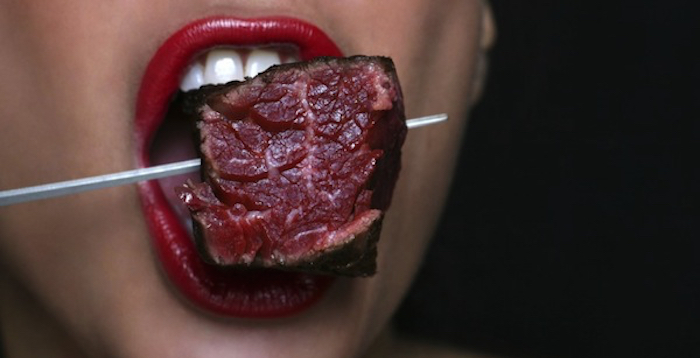Tantra goes all the way back to the ancient language of Sanskrit which is originally from India and offers sensual and enlightening terminology. The beginnings go back as far as 1500 BC; its writings concentrated on philosophical issues and ritualistic teachings such as the well known Kama Sutra, a sexual manual from the 14th century. The term “sanskrit” is derived from “samskrta” which means “adorned, cultivated, perfected”. Sanskrit has been maintained as the literary language of the priestly, learned and cultivated castes of India.
The name “Yab-Yum” is an ancient Sanskrit term which defines the classical, heart-to-heart position of Tantric lovemaking. In this position, both partners are seated upright, with the woman on top of the man. The main consideration is that the spine must be relatively straight so that the spinal energy of the Kundalini (sexual force) can travel unimpeded and a cosmic circuit can be created between lovers. When a couple comes into union consciously, they move their energy simultaneously. The Yab-Yum position draws the partners into an “auric egg” or circle on eternal union.
Below are a sampling of Sanskrit words that can be used when exploring Tantra and Tantric Sex.
1.Tantra – The ancient yoga originating in India that trains one in the ways of weaving and transforming sexual energy into altered states and awakening to enlightenment, thus carrying sexuality to unfathomable heights and depths.
2. Amrita – This term means nectar of the Gods. It is the female ejaculatory fluid that flows from the urethra of some women during orgasm. Some people believe this fluid to have mystical powers; ancient tribes used it to make healing balms and aphrodisiacs.
3. Aura – The energetic field layers around the body, seen by some in varying colors and noticeable as a warm, fuzzy – sometimes mildly electrical – energy to the open hand as the hand moves closer to the body.
4. Auric Egg – The energy field created by a man and woman in the Yab-Yum position of lovemaking, in which both partners are sitting upright and creating a circle of energy that flows evenly up and down their spines.
5.Bindu – A drop of semen.
6. Goddess Spot – This area of female genitalia is better known as the G-Spot which was named after Ernest Grafenberg who first clinically identified it in the early 1950s. It is the fleshy area in the vaginal wall, right behind the pubic bone and between the opening of the urethra and the cervix. It swells when stimulated, and creates a heightened energy response in women.
7. Guru – The teacher or master of knowledge.
8.Hatha – The joined Sanskrit stems “ha”, meaning sun, and “tha”, meaning moon. Symbolic of the soul and body of the human being.
9.Kundalini – The creative (sexual) life-force energy at the base of the spine that, once awakened, coils upward like a snake through he electrical chakra centers awakening each aspect of the soul more fully. If this powerful force is unleashed correctly, the kundalini energy takes sexuality out of the genital area and gives one an overall body orgasm that is fulfilling rather than draining.
10.Lingam – Means the wand of light and describes the penis.
11. Yoni – Means the sacred space and refers to the entire vaginal area including the clitoris and labium.
12. Maithuna – The traditional tantric ritual culminating in a sexual bio-energy exchange.
13. Million Dollar Point – The hollow point in the perineum (between the anus and the scrotum) that, when pressed firmly, will block the outward flow and facilitate the upward flow of the seminal fluids. It is said that when this technique is used properly, the man will “feel like a million dollars”.
14. Mukh maithun – Fellatio
15. Honoring – Cunnilingus
16. Nirvana – The extinction of self-will in favor of a more blissful union with the universe, often achieved through meditation and the proper awakening of the kundalini sexual force.
17 Orgone – Bio-energy discovered to be the life force connected to sexuality.
18 Shakti – The feminine aspect of kundalini, kinetic energy.
19 Shiva – The masculine aspect of kundalini, static energy.
20 Vajra – Wand or thunderbolt, another name for penis.
21. Mani and Padme – These two terms are very significant in male/female relations. Mani means “jewel” and “padme” means “lotus”. “The jewel in the lotus” is a significant eastern expression referring to penis (jewel) inside the many folds of the lotus (vagina).
To learn more about Tantra and Tantric Sex, take my course on Tantric Love.


































